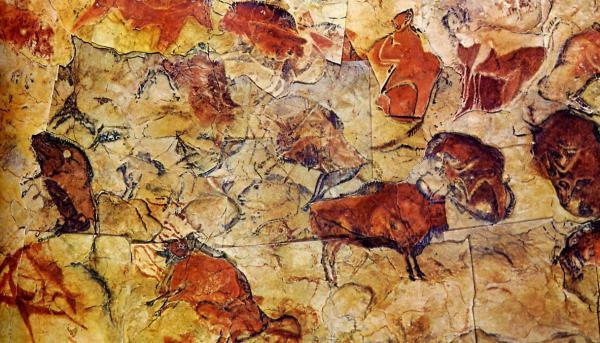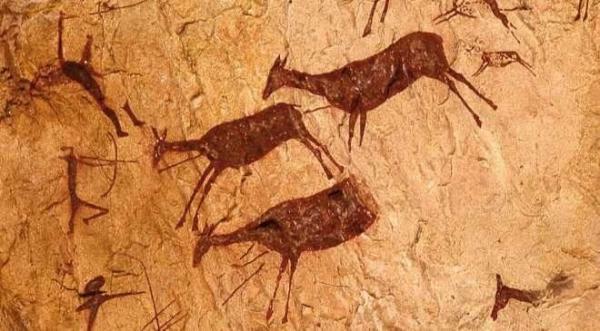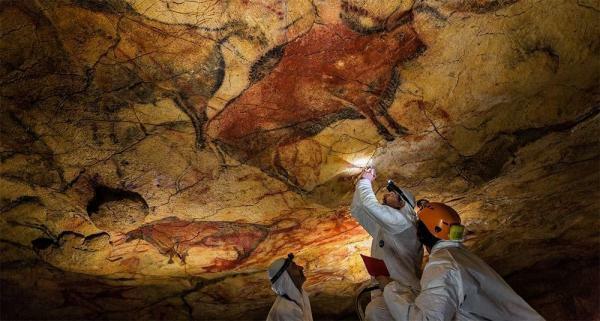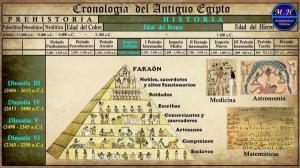Rock art in Spain

Image: ReydeKish
When it comes to referring to cave art, it is always better to do it under the name of prehistoric art, since the term rock comes from the Latin "rupes”(Stone) referring to a type of human activity done on rock. In this way, if they ever talk to us about rock art, we know that it is an art linked only to painting. Next, in this lesson from a TEACHER we will talk about rock art in Spain and we will refer to those most important cave paintings that have been found in Spain.
Index
- Cave painting
- Timeline, materials and themes of cave painting
- Location of the paintings
- Altamira cave
Cave painting.
The prehistoric painting or also popularly known as cave or parietal painting It can be found represented either in the open air (in ravines, cliffs ...) or inside caves, the latter being the best preserved.
It has always been said that cave painting is one more artistic expression, however, this conception is erroneous, since in the mind of prehistoric man did not have the idea of creating something artistic, as we currently understand art, but rather They are
paintings that are linked to amagical and religious value.As we well know, in prehistory, human groups were nomads, they were familiar with nature and they moved according to the animals they wanted to hunt, since their main activity was to obtain food. With the representation of these paintings linked to that magical thought what they wanted was to attract those animals to later hunt them down, and not run away.
Therefore, as an art of primitive hunters, what will prevail at all times is the hunting theme, that is to say, related to the theme of hunting, hence, the representation of a figure, animal or symbol implied for them possession or repulsion.
In this video of a PROFESSOR you will get to know the first settlers of Spain.

Image: A dozen
Timeline, materials and theme of cave painting.
Before we start talking about cave art in Spain, let's get to know this type of art a little better. Prehistory can be divided into three major periods: Paleolithic, Neolithic and Metal Age.
However, for the subject that concerns us we have to say that the first samples of paintings made inside these rocky shelters are located in the Upper Paleolithic, between the 35,000 BC C. and 10,000 a. C. being in the Magdalenian period when they have their maximum splendor.
Regarding the materials, In this type of primitive painting, a series of natural pigments from the coal, earth, clay, blood, crushed stones of different colors... and all those agglutinated with fats, generally from animals.
Regarding the thematic there are several that we can find, such as, for example:
- Animals: that appear outlined, silhouetted, polychrome or in relief.
- Hands: They can appear either positive or negative, with a meaning related to a desire for permanence or possession.
- Anthropomorphic figures: from which certain social classes can be distinguished, depending on some tribute they possess.
- Macaroni: which are about lines drawn with the same fingers on the wall.
Location of the paintings.
You should know that cave art in Spain has created two great schools, depending on the geographical location in which these creations were found. Thus, we can determine these two foci:
Franco-Cantabrian school
As its name indicates, it is located in the south of France and throughout the Cantabrian mountain range, which is what concerns us.
In general, they will be about paintings of warm colors and ocher, naturalistic where the animals are represented silhouetted and isolated, located in the most remote of the caves. The most outstanding examples are the paintings found in the Cave of Altamira,the cave of La Pasiega (Santander) and Lascaux cave.
Levantine school
Developed throughout the Spanish Levante, it is characterized by being a narrative painting, with reddish tones, making a lot of use of the white color, where in the Cantabrian mountain range it was almost non-existent, representing highly schematized, flat, and less realistic human figures.
Another difference with respect to the previous one is the representation in a greater number of human figures of animals with Scenes from everyday life, such as a woman collecting honey, fighting between men, scenes of warrior parades, dances ...
They are mostly monochrome paintings, cold colors, unlike the previous school, these are going to be developed not only in the innermost of the rocky shelters, but it is also common that we find paintings in the air free. The most important are the paintings found in the caves of the Moors of Cogul (Lleida) and in the ravine of Valltorta (Castellón).

Image: Jordi Carreño Crispín
The cave of Altamira.
The discovery of the Altamira cave in 1879 It is the culmination of the evolutionary process of Franco-Cantabrian painting, in it you can see a whole herd of animals wild and unknown, of large perfectly defined dimensions, the bison being the most repeated animal in several attitudes.
Many historians explain this multiplicity because it is believed that this was the favorite animal of the prehistoric hunter, at the same time as the most dangerous animal when hunting it. As for the techniques used, they are very simple paints, of natural pigments always using black to delimit the contours of the figures.
Finally, make mention of how the artist takes advantage of the bulges of the rocks at all times to give a feeling of volume to the animals. Currently the cave is part of the World Heritage Site by UNESCO.
If you want to read more articles similar to Rock art in Spain, we recommend that you enter our category of Story.



